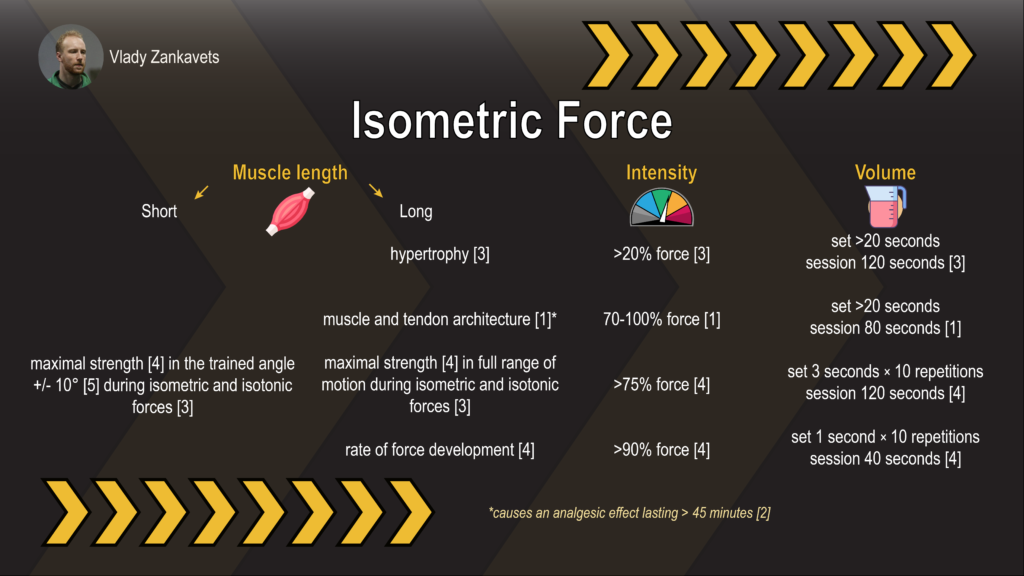
Isometric forces are characterized by the absence or minor change in muscle length. We develop such forces while standing in line in a market or pushing a car stuck in the snow. In the world of sports, this could be a weightlifter holding a barbell overhead until the referee counts the attempt, or a sprinter pressing their feet against the starting blocks in anticipation of the gunshot.
Despite all the similarities, when considering the above examples, one can notice a fundamental difference: in the example of the shopper and the weightlifter, these individuals are maintaining a specific position, consistent with the rules of social behavior or competition in a given sport, while in the other two examples, they are exerting force on an object that cannot be moved (a car is firmly stuck, the blocks are securely fastened).
Accordingly, it is common to distinguish two types of isometric forces (Fig 1):

- yielding isometric force. When generated by a lengthened muscle for more than 80 seconds in total during a single session, it causes positive changes in muscle and tendon architecture [1], as well as reduction of the level of pain in the presence of tendinopathy [2]. A greater work volume (120 seconds, according to the research [3]) also promotes muscle hypertrophy (Figure 2). It should be emphasized that these effects are observed during training in a lengthened muscle position. According to the research results, maintaining forces in a shortened muscle position were ineffective;
- isometric overcoming forces. As we recall from Hill's law, there is an inverse relationship between velocity and the level of force: the lower the former, the greater the force that can be exerted. When generating isometric forces, the velocity is zero, and therefore a person is capable of exerting greater force compared to their concentric efforts (Figure 1). It's logical that overcoming isometric forces have come to be used in sports practice as a method for developing maximum strength and the rate of force development [4] (Fig 2). A distinctive feature of overcoming isometric force is it effectiveness even in a shortened muscle position, but only within the trained angle of +/- 10 degrees [5].

Application of yielding isometric training with youth athletes:
Application of yielding isometric training with pro athletes:
Application of overcoming isometric training with pro athletes:
References:
1.Kubo K, et al. Effects of different duration isometric contractions on tendon elasticity in human quadriceps muscles. J Physiol 536:649-655 (2001)
2.Rio E, et al. Isometric exercise induces analgesia and reduces inhibition in patellar tendinopathy. Br J Sports Med 49:1277-1283 (2015)
3.Oranchuk DJ. Isometric training and long‐term adaptations: effects of muscle length, intensity, and intent: a systematic review. Scand J Med Sci Sports 1-20 (2019)
4.Balshaw TG, et al. Training‐specific functional, neural, and hypertrophic adaptations to explosive‐ vs. sustained‐contraction strength training. J Appl Physiol 120:1364-1373 (2016)
5.Manske RC, et al. Muscle Weakness. In Physical rehabilitation: evidence-based examination, evaluation, and intervention. pp. 64-86 (2007)